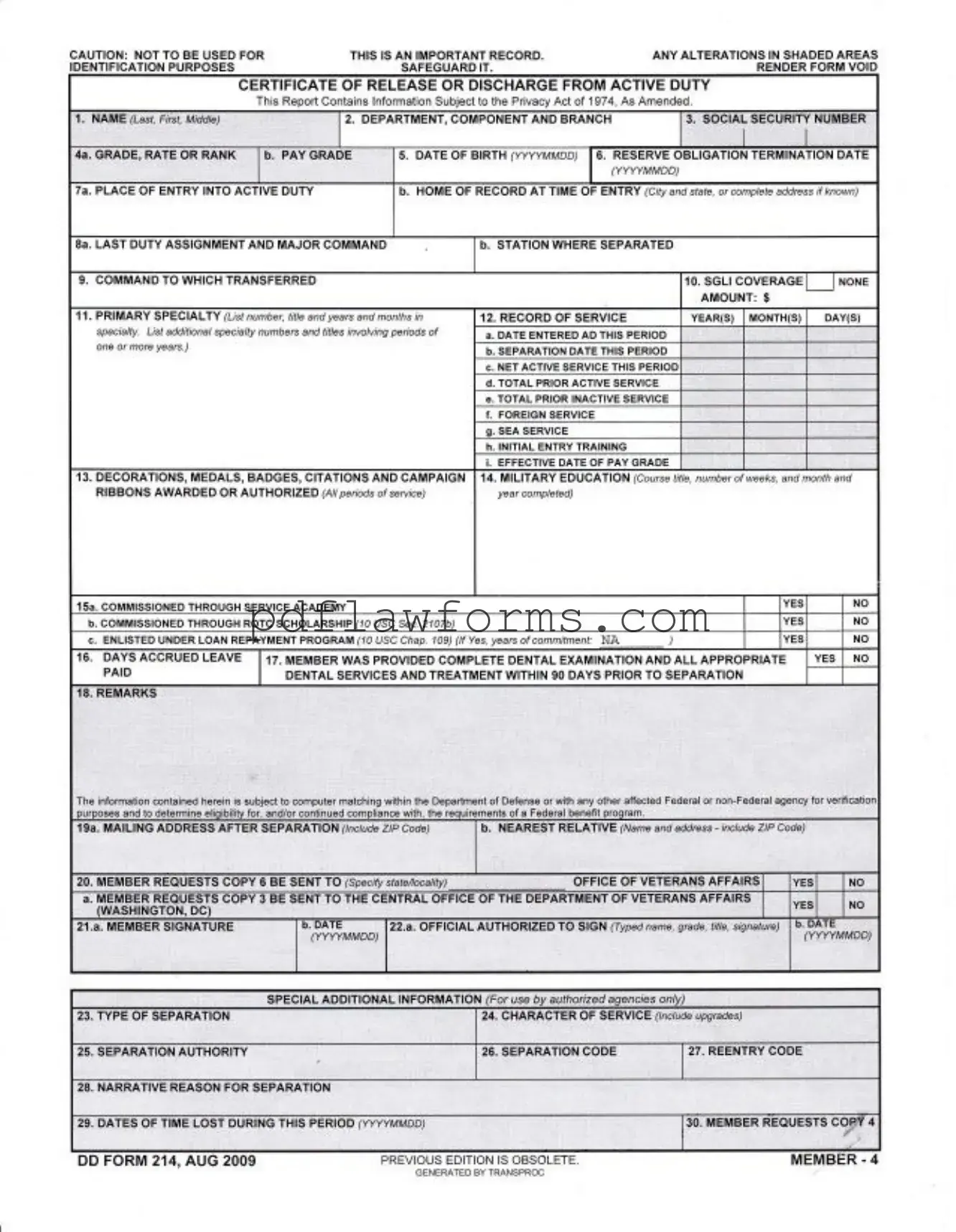Completing the DD Form 214 is a critical step for service members transitioning from active duty. However, many individuals make common mistakes that can lead to complications later on. Understanding these pitfalls can help ensure the form is filled out correctly.
One frequent error involves providing incorrect personal information. This includes misspellings of names or inaccuracies in the Social Security number. Such mistakes can cause significant delays in processing and may even affect eligibility for benefits. It is essential to double-check all personal details before submission.
Another common mistake is neglecting to fill out the section regarding the member's service record. This includes information about dates of entry and separation, as well as total active service. Omitting these details can result in an incomplete record, which may hinder access to important veteran services.
Some individuals also fail to include the correct mailing address after separation. This is crucial, as it determines where future correspondence and benefits information will be sent. A wrong address can lead to missed communications, potentially impacting benefits or services.
In addition, many service members overlook the section regarding dental examination and treatment. Failing to indicate whether a complete dental examination was provided can lead to confusion regarding eligibility for dental benefits post-separation. It is important to answer this question accurately.
Another mistake is not specifying the type of separation. Whether it is honorable, general, or other-than-honorable, this classification is vital for future benefits and opportunities. Providing the wrong type can lead to complications in accessing veteran services.
Moreover, individuals sometimes forget to sign the form. An unsigned DD Form 214 is considered invalid and can delay the entire process. Always ensure that the signature is provided where required.
People also often misinterpret the section on decorations, medals, and badges. It is crucial to list all awards accurately, as these honors can impact future opportunities and benefits. Missing or incorrectly listing awards can diminish the perceived service record.
Lastly, many individuals neglect to request copies of the DD Form 214 to be sent to the Department of Veterans Affairs or other relevant offices. This can lead to difficulties in accessing benefits later on. It is advisable to make these requests explicitly to ensure proper documentation is maintained.
By being aware of these common mistakes, service members can better prepare their DD Form 214. Taking the time to review and verify information can save significant time and hassle in the future.
